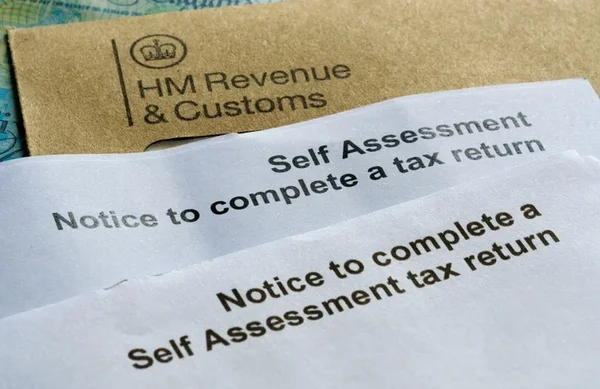What’s Up With That?
Understanding how to obtain and use your UTR is vital for compliance and avoiding payment delays.
The registration process might seem daunting, but broken down into steps, it’s quite manageable. The Government Gateway is the online portal where you can access your UTR and manage your tax details.
HM Revenue and Customs (HMRC) is responsible for issuing UTR numbers and overseeing CIS compliance throughout the registration process.
Pie.tax, the UK’s first personal tax app, helps streamline your CIS tax management with automated calculations. Or if you’re just here to get to grips with it all, let’s break it down!
What Is a UTR Number and Why Do CIS Subcontractors Need One?
UTR stands for Unique Taxpayer Reference, also known as a unique tax reference number – a 10-digit number assigned by HMRC that acts as your tax identity card.
Think of it as your tax passport – you simply can’t work properly within the CIS system without one. The UTR is required for tax purposes under the CIS, as it helps HMRC track your tax obligations.
Every self-employed person needs a UTR, but for CIS subcontractors, it’s particularly important as contractors need it to verify your status. Self employed workers in the construction industry must have a UTR to participate in the scheme.
Without a valid UTR, contractors might have to deduct tax at a higher 30% rate instead of the standard 20%. The CIS scheme tax is deducted from payments to ensure compliance with HMRC regulations.
This higher rate can significantly impact your cash flow until you complete proper registration.

Business Structure and Tax Implications for CIS Subcontractors
Choosing the right business structure is a big decision for any subcontractor working under the Construction Industry Scheme (CIS). Whether you operate as a sole trader, limited company, or partnership, your choice will shape how you handle income tax, National Insurance, and CIS tax deductions.
No matter your business structure, you must verify your CIS status with contractors to ensure the correct tax deductions are made. If you’re VAT registered, you’ll also need to submit VAT returns and include your VAT registration number on invoices.
How to Register for a UTR Number as a CIS Subcontractor
Registering for your UTR is your first step into the world of self-employment in construction.
Visit the GOV.UK website and register for Self Assessment. HMRC's online services are also available to assist with the registration process and provide support for CIS subcontractors.
You’ll need to provide basic details like your name, address, National Insurance number, and information about your work. Be clear that you’re working in construction as a CIS subcontractor – this ensures HMRC sets everything up correctly.
After registering, HMRC will post your UTR to your home address, typically within 10 working days. I once waited anxiously by my letterbox for three weeks after registering, only to discover my UTR letter had been delivered to my neighbour!

Registering for CIS After Getting Your UTR
Once you’ve received your UTR, you need to register specifically for the Construction Industry Scheme. Tell them you want to register as a CIS subcontractor and answer their questions about your business. They’ll ask about your work arrangements and bank details for any potential tax refunds.
This second registration usually takes 2-3 working days to process, after which you’re officially on HMRC’s CIS register. Proper registration ensures you can receive payments from contractors without unnecessary delays.
Common Issues When Registering for a UTR
“Where’s my UTR letter?” is probably the most common question – postal delays happen, but if it’s been over two weeks, contact HMRC. Both individuals and businesses in the construction sector may encounter similar registration issues.
Moving house during the application process can cause problems, so update HMRC immediately if your address changes. Some subcontractors confuse company UTRs with personal UTRs – if you’re a sole trader, you only need a personal UTR.
Lost your UTR? Don’t panic – you can find it on previous tax returns or contact HMRC. You’ll need to answer security questions to recover your UTR if you can’t locate it elsewhere.

Using Your UTR Number Under the CIS Scheme
Always give your UTR to your contractor before starting work – this is non-negotiable if you want to be paid properly under the CIS scheme.
Keep your UTR handy but secure – it’s not super-sensitive like your bank details, but shouldn’t be shared unnecessarily.
Include your UTR on all invoices and CIS-related paperwork to make life easier for everyone involved. Contractors need this information to process payments and file accurate monthly returns, which are essential for CIS compliance.
Your UTR stays with you for life, even if you stop working in construction temporarily. Consider creating a template invoice with your UTR already included to save time on paperwork.
Final Thoughts
Getting your UTR and registering for CIS might seem like boring admin, but it's the foundation of working properly in construction. The process is straightforward when you know the steps, and once done, you won't need to repeat it.
Working without proper registration can lead to higher tax deductions and potential complications with HMRC. With your UTR sorted, you can focus on what really matters – delivering quality work and building your construction business.

Pie: Simplifying CIS Tax Management
Getting your CIS tax affairs in order shouldn't give you a headache when you've got the right support.
Pie, the UK's first personal tax app, was built with CIS subcontractors in mind, helping you track deductions across multiple jobs.
Our app lets you snap photos of your CIS statements and automatically calculates your true tax position, factoring in expenses. We know construction work can be unpredictable, which is why our real-time tax estimates adjust as your income changes.
Fancy seeing how much easier tax could be? Pop over to our website to learn more about how we help thousands of subcontractors just like you.











